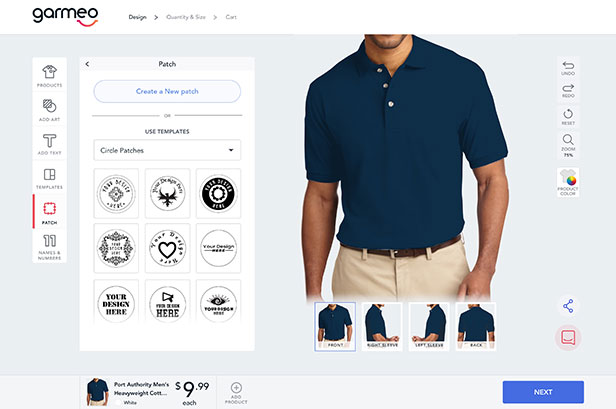December 19, 2018
Q&A: Ricoma Creates an 'Uber for Embroidery'
Embroidery machine maker Ricoma is hoping to disrupt the decorated-apparel market with Garmeo, a new initiative the company describes as Uber for embroidery. Just as Uber drivers receive clients via a user-friendly app, embroiderers signed up for Garmeo would receive apparel customization orders based on location, capacity and other factors. We spoke with Henry Ma, COO of Ricoma, about the company’s latest offering.

Henry Ma, COO of Ricoma
Q: How does Garmeo work?
Henry Ma: Garmeo is the first distributed customization fulfillment platform of its kind. Embroiderers sign up to be a vendor on the platform to fulfill apparel customization orders that are intelligently routed to them based on location, capacity, fulfillment capabilities and other factors. Consumers and businesses can order customized apparel through an online editor that will then package their specifications and provide these to the vendor. Garmeo is meant to enhance the user experience by minimizing back and forth in the ordering process and at the same time provide more business for vendors by allowing them to focus on order fulfillment while taking care of the administrative work for them.
Q: How did you come with the idea for the platform?
HM: Nowadays, customization and personalization are everywhere. Consumers want to show off their personality through personalized designs, and businesses want to present a consistent brand image through customized decorated apparel. On the consumer end, just about everyone owns some sort of embroidered apparel, and on the business end, the demand for embroidered apparel is higher than ever. But when you look at the technology used to facilitate this type of demand, it hasn’t really changed much. Embroiderers fulfilling these orders are still very much fragmented, and the consumer shopping experience is weighed down by email exchanges, text messages and phone calls to confirm specifications and get quotes. All of these trends culminate into the creation of the Garmeo platform to better facilitate the supply and demand of customized apparel, providing more business for the vendors while enhancing the experience for the consumers.

Q: What sets Garmeo apart from other online customization platforms?
HM: For the consumer, Garmeo provides a much more robust customization interface, allowing options such as embroidered patches, appliqué and 3-D puff. Also, orders are intelligently fulfilled based on location and capacity, minimizing turnaround time and cost for the consumer.
While other online customizers simply create an online design editor and then fulfill the order themselves, Garmeo leverages the capabilities and capacity of a network of apparel decorators to minimize turnaround time and maintain quality control through an internal feedback system. It is also the first platform to take a “done-for-you” approach for the vendors on the platform. Instead of having to manage an online store, Garmeo requires minimal effort in the administrative work that comes with the fulfillment process.
Q: When does Garmeo launch, and who will be able to use it?
HM: Garmeo launches Jan. 18 and will be available to vendors who have been pre-vetted to join the platform. Anybody wanting to order custom embroidered apparel can also go to garmeo.com to place their order.
Q: Why are online customization platforms so popular with consumers?
HM: Individual consumers want to demonstrate their creativity and personality by using customized apparel as a medium of self-expression. Businesses also want to stand out and look professional, presenting a consistent brand image in front of their ideal customers. All these factors contribute to the demand of customized apparel.
Q: Anything else you’d like to add about the platform?
HM: Custom embroidery is just the beginning for Garmeo. With the technology we’ve created, the platform’s capabilities can be extended into other verticals of apparel decoration methods, including screen printing, digital garment printing, laser engraving and more. Garmeo provides a win-win situation for both the consumer and the vendor, giving the consumer quality products with a fast turnaround time while giving the vendor more time to focus on fulfilling orders instead of being bogged down by marketing and administrative work.
